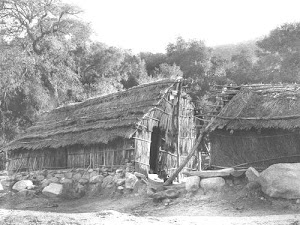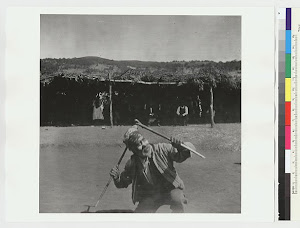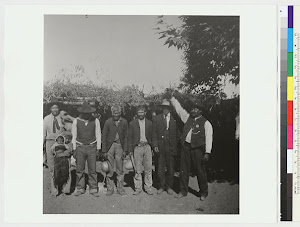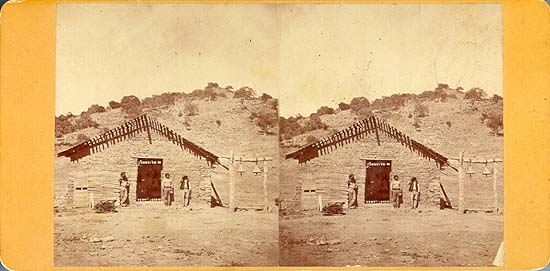Howka tribal members, My friend Lisa Mitten, another Native librarian just sent out an email about a free computer E book that has alot of free downloadable Native books. I thought this might be especially good for our tribal members since we have no libraries close to the reservation
The new ebook reader for your computer called BLIO - http://www.blio.com/
Tell me what you think and maybe we can use it as a way to start a book club on the rez, as we don't have multiple copies of the same book available for all the kids.
I am also hoping it will help some of our college students.
http://www.blio.com/
Tuesday, October 26, 2010
FREE EBOOK
Posted by
Karen Vigneault Librarian
at
8:32 AM
0
comments
![]()
Thursday, October 21, 2010
STOP VIOLENCE AGAINST INDIAN WOMEN
Howka sisters and brothers, as many of you know violence against Native women is an ongoing issue that needs to be addressed. Today the SD Union Tribune posted an article by Susan Montoya Bryan about a new law addressing this issue. Read the article below..... let's hope this law makes an impact and helps our sisters.
"
Federal law takes on crimes against Indian women
By SUSAN MONTOYA BRYAN, Associated Press Writer,
Wednesday, October 20, 2010 at 4:05 p.m.
ALBUQUERQUE, N.M. — Federal and tribal officials hope a new law aimed at improving the judicial landscape in Indian Country will also help them combat "disturbing" crime statistics involving American Indian women.
According to federal data, one in three Indian women will be raped in their lifetimes, while two-fifths will suffer from domestic violence. The chance an Indian woman will be the victim of a violent crime is three and a half times greater than the national average, recent numbers shows.
"The statistics in Indian Country regarding violence against women are disturbing to say the least. It's incumbent upon us to take appropriate action," said Wizipan Garriott, policy adviser to Assistant Interior Secretary of Indian Affairs Larry Echo Hawk.
Many point to these figures as the impetus for the Tribal Law and Order Act, a broad new federal law aimed at combating crime on reservations.
About 150 judges, tribal leaders and law enforcement officials met Tuesday and Wednesday in Albuquerque for a national symposium on implementing the law, signed by President Barack Obama in July.
The act requires federal and tribal officers serving Indian Country to be trained in interviewing sexual assault victims and collecting evidence at crime scenes. It also requires the Indian Health Service to establish a nationwide protocol for helping sexual assault victims.
While it will take time to fully implement all the provisions in the act, Garriott said improving the way federal and tribal agencies go about their daily work will make things better. For instance, he said, if data shows domestic violence calls are on the rise, agencies will look at how they can better train officers to respond.
Coordination with U.S. attorneys that cover Indian County will also help ensure crimes against women are prosecuted, he said.
Supporters of the law say it will untie officers' hands in some cases by allowing them to make warrantless arrests.
"If you see the evidence, the bruising or a facial expression - even with just a facial expression you can tell something happened - that probable cause will allow the police officer to make that arrest and stop the violence. Even if it's for a short period of time, it will help," said Francine Bradley-Arthur, who served as a Navajo Nation police officer for 20 years and often saw the effects of domestic violence.
Sarah Deer, an assistant law professor and member of the Muscogee Creek Nation, was among the dozens of people who helped develop the Tribal Law and Order Act. She said she's particularly hopeful the IHS will commit to training staff and having rape exam kits available at all of its facilities.
About 30 percent of IHS facilities don't have policies in place for dealing with sexual assault cases, according to federal figures.
Deer acknowledged that not all women will report sexual assaults or want a forensic exam, but she said they should have the option.
"It's a protocol that's been used in mainstream America for going on 30 years, and it just has been denied to Native women," she said. "We're just asking - and hoping - that we can raise the standard for Native women equal to the expectations of mainstream America."
Deer and others said the law is not a quick fix for Indian Country's crime problem, but it will provide the framework for taking incremental steps forward.
"There is a light at the end of the tunnel," Bradley-Arthur said. "
The Associated Press
Posted by
Karen Vigneault Librarian
at
8:26 AM
0
comments
![]()
Monday, October 18, 2010
VIDEOS ABOUT WOMEN SHAMANS
Howka tribal members.. A friend of mine sent me this great footage..she said " If you are interested in anthropology, this will be of great interest to you. This is from a friend who does reserch int the type of thing that interestests me. It is totally facinaging, so a am passing it on and sharing with all of you because this film is a real cultural treasure. It shows the great Pomo holy woman Essie Parrish performing a healing ritual in the Roundhouse, the ritual space of her people in northern California. She knew she was preserving this precious heritage, after generations of missionary inroads on Pomo culture, and the commentaries are all hers. Her title was Yomta, which means "Song," and she carried not only the chants but the ceremonies, the spiritual heritage, the healing ways of the "Indian doctors" and the Bole Maru Dreamers"
The Pomo shaman is named Piwoya her english name is Essie Parrish.. it also has singers named Bernice Dollar, Bertha Antone, Julia Marrufo & Emmett Antone. The fire tender is Clement Marrufo and the patient is Sidney Parrish. I am hoping people may know these family relations and pass on this rare footage..
http://www.sourcememory.net/womanshaman/videolinks.html
Posted by
Karen Vigneault Librarian
at
8:51 AM
0
comments
![]()
Friday, October 15, 2010
EARTH WEBCAMS
Howka tribal members.. I know we have such a beautiful view on the rez... our beautiful Volcan mountains .... but in case you want to look at other places on beautiful muut (mother earth).. take a look at this webpage full of webcams of beautiful places all over ..http://www.earthcam.com/
here you can watch zoo cams, cams looking at tourist spots worldwide..
there is also a great section for the kids of our rez.
http://www.earthcamforkids.com/
Posted by
Karen Vigneault Librarian
at
8:14 AM
0
comments
![]()
Thursday, October 7, 2010
San Francisco Bay Area Television Archive KQED Collection
Thanks to Susan Hanks I was sent this link to some great archival footage.
http://diva.sfsu.edu/collections/sfbatv/2570
San Francisco Bay Area Television Archive KQED Collection http://diva.sfsu.edu/collections/sfbatv/2570
Native American Burial Sites : KQED News report from September 5th 1975 in South San Francisco (San Mateo County), examining the tension between economic expansion in California and the preservation of Native American sacred burial sites. Includes scenes from an archaeological dig, views of an Ohlone Indian cemetery and also interviews with several pundits, who discuss the issues involved.
http://diva.sfsu.edu/collections/sfbatv/bundles/189762
Native American Employment Discrimination: KQED News report from August 29th 1973 featuring a press conference with Lehman Brightman, in which he announces that a charge of employment discrimination towards Native Americans is being filed against the Justice Department and other Federal agencies. He explains: "This twelve page complaint is unprecedented in the fact that it's a first in the nation to be filed with the newly created Office of Indian Rights, which is within the Justice Department." Also includes scenes of other speakers discussing this issue, one of whom points out that the Justice Department has indicted more Native Americans than they have hired, over the past three years. http://diva.sfsu.edu/collections/sfbatv/bundles/189502
Pomo Indian Demonstration: KQED News report from January 27th 1975 featuring a rally by Pomo Native Americans, who are claiming the Catholic church should not be trying to charge them $750,000 to re possess vacant land in Northern California. http://diva.sfsu.edu/collections/sfbatv/bundles/189752
Public Hearing on Native American housing: KQED News report from September 21st 1976 in San Francisco, featuring scenes from a public hearing about the shortage of affordable housing for Native Americans in urban areas. http://diva.sfsu.edu/collections/sfbatv/bundles/189766 Includes view of San Francisco American Indian Center
Ron Dellums: A test of coalition politics: Documentary film produced by Oliver Moss and presented by KQED's Black Production Unit, following the 1972 political campaign of Congressman Ron Dellums and the Oakland Democratic Coalition. Includes interviews with Dellums, Willie Brown, Leola 'Roscoe Higgs' Dellums and many political supporters and opponents from the Bay Area http://diva.sfsu.edu/collections/sfbatv/bundles/188782
Posted by
Karen Vigneault Librarian
at
3:06 PM
0
comments
![]()
Sacred Smoke Project
http://www.youtube.com/watch?v=pivRGTXCmlg&feature=player_embedded
As many of our youth and adults know.. smoking kills many of our people..
The Northern California Indian Development Council’s Sacred Smoke Project is proud to announce the release of student created Public Service Announcements on the impact of commercial tobacco in the American Indian community. The messages the students communicate is that tobacco is a sacred gift for many tribes and that commercial tobacco is a major health risk for American Indian people. The effort of these students promotes both an important health message while reinforcing American Indian culture.
Posted by
Karen Vigneault Librarian
at
9:08 AM
0
comments
![]()
Wednesday, October 6, 2010
ABUSE AGAINST NATIVE WOMEN
Howka sisters and brothers.. as we all know violence against Native Women is very high. I wanted to post a few websites that discuss the issue as well as show posters of some missing sisters.
http://www.amnesty.ca/campaigns/sisters_overview.php
http://indiancountrynews.net/index.php?option=com_content&task=category§ionid=36&id=183&Itemid=117
How many Sisters do we have to lose?
Helen Betty Osborne was a 19-year-old Cree student from northern Manitoba. She dreamed of becoming a teacher. On November 12, 1971, four white men abducted her from the streets of The Pas. She was sexually assaulted and brutally murdered. A judge said later:
... the men who abducted Osborne believed that young Aboriginal women were objects with no human value beyond sexual gratification ... Betty Osborne would be alive today had she not been an Aboriginal woman.
The murder of Helen Betty Osborne – and her family’s long search for justice – is one of the nine stories of missing and murdered Indigenous women and girls told in Stolen Sisters: Discrimination and Violence against Indigenous Women in Canada, a report by Amnesty International.
These stories represent just part of the terror and suffering that has been inflicted on Indigenous or Aboriginal women and their families across Canada.
This violence can be stopped. But only if Canadian officials take concerted action to protect the lives of First Nations, Inuit and Métis women and girls.
On March 25, 2003 – three decades after the murder of Helen Betty Osborne – her 16-year-old cousin, Felicia Solomon, went missing in Winnipeg. The first posters seeking information on her disappearance were distributed by her family, not the police. Parts of her body were found three months later.
Lives at risk
According to a Canadian government statistic, young Indigenous women are five times more likely than other women of the same age to die as the result of violence.
Indigenous women have long struggled to draw attention to violence within their own families and communities. Canadian police and public officials have also long been aware of a pattern of racist violence against Indigenous women in Canadian cities – but have done little to prevent it.
The pattern looks like this:
Racist and sexist stereotypes deny the dignity and worth of Indigenous women, encouraging some men to feel they can get away with acts of hatred against them.
Decades of government policy have impoverished and broken apart Indigenous families and communities, leaving many Indigenous women and girls extremely vulnerable to exploitation and attack.
Many police forces have failed to institute necessary measures – such as training, protocols and accountability mechanisms – to ensure that officers understand and respect the Indigenous communities they serve. Without such measures, police too often fail to do all they can to ensure the safety of Indigenous women and girls whose lives are in danger.
No excuse for government inaction
There is no excuse for government inaction. In fact, many of the steps needed to ensure the safety and well-being of Indigenous women have already been identified by government inquiries – including the inquiry into the murder of Helen Betty Osborne.
All levels of government should work closely with Indigenous women’s organizations to develop a comprehensive and coordinated programme of action to stop violence against Indigenous women. Immediate action should be taken to implement a number of long overdue reforms, including:
Institute measures to ensure that police thoroughly investigate all reports of missing women and girls
Provide adequate, stable funding to the frontline organizations that provide culturally-appropriate services such as shelter, support and counselling to help Indigenous women and girls escape from harm’s way
“When will the Canadian government finally recognize the real dangers faced by Indigenous women?” asks Darlene Osborne, a relative of Felicia Solomon and Helen Betty Osborne. “Families like mine all over Canada are wondering how many more sisters and daughters we have to lose before real government action is taken.”
A message from Tantoo Cardinal
"There are intensely wound layers of sexism and racism that are at the root of countless acts of violence against Aboriginal women and at the root of inaction to protect and advocate for Aboriginal women.
My prayers are with the stolen sisters and their families. It is my honour to acknowledge the Stolen Sisters report. All our efforts will work towards a safer future for our daughters and granddaughters."
For more information on this report, please contact info@amnesty.ca
Posted by
Karen Vigneault Librarian
at
8:38 AM
0
comments
![]()
Monday, October 4, 2010
Help end anti-LGBT bullying!
TAKE ACTION: Help end anti-LGBT bullying! ---
In the wake of a recent spate of bullying-related youth suicides, talk show host Ellen DeGeneres has released a video entitled "An Important Message" hoping to raise awareness, to reach out to suffering kids and teens so that they know they are not alone, and to move people to action to help at risk youth.
http://www.youtube.com/watch?v=Br7nbQSIyhg
Rutgers student 18 year-old Tyler Clementi took his own life last week by jumping off the George Washington Bridge after his roommate allegedly secretly filmed him in an encounter with another man.
13 year-old Seth Walsh, a Californian teenager who spent nine days in hospital on life-support following a suicide attempt, died Tuesday. He was bullied for being perceived as gay.
13 year-old Asher Brown killed himself with his father's gun following a sustained campaign of anti-gay bullying at school. On the morning he took his own life, he came out to his parents.
15 year-old Billy (William) Lucas took his own life a couple of weeks ago after what has been described as years of bullying over his perceived sexuality. Sadly, news has emerged of a possible fifth suicide.
19 year-old Raymond Chase, a Johnson and Wales sophomore, is thought to have taken his own life this past Wednesday. Chase was reportedly openly gay. The reason why he took his own life is currently unknown. ---
Don't Suffer in Silence, Get Help ---
The Trevor Project runs a 24/7 helpline with trained counselors ready to listen if you or someone you know would like to talk about the issues dealt with in this post. The Trevor Project Helpline number is 1-866-4-U-TREVOR (1-866-488-7386).
Posted by
Karen Vigneault Librarian
at
12:49 PM
0
comments
![]()
Poster Competition! WIN $1,000
Poster Competition!
2011 San Diego Latino Film Festival Poster Competition Call for Entries
Media Arts Center San Diego is now accepting submissions for our second annual Film Festival Poster Competition. The deadline for all submissions is November 19, 2010.
*Click here for Submission Form
Media Arts Center San Diego, in partnership with the San Diego Reader, will be presenting the 18th Annual San Diego Latino Film Festival (SDLFF) 10-20, March 2011. This prestigious and internationally recognized festival celebrates films and videos by Latinos and/or about the Latino experience, screening over 160 works from across Latin America and throughout the United States. For the first time, the Festival is putting a call out to artists and graphic designers for its annual poster artwork. Artists and Designers are encouraged to submit work for the Film Festival Poster Competition by November 19, 2010.
Late submissions will NOT be accepted.
Guidelines
The competition is open to all artists and graphic designers, and all submissions must be received by the deadline of November 19, 2010 at 5:00pm. There is no limit to the number of submissions entered. In honor of our inaugural year of Festival Poster Competition, there is no entry fee. Entries will be accepted from individuals, collaborative teams, or design firms, with prize money being split between the entrants listed. No additional prize money will be awarded.
*Entries must be mounted on an 8 1/2" w x 11" h board.
In the artwork, be sure to include "18th Annual San Diego Latino Film Festival, March 10-20 2011" Entries may be in the form of photography, painting, graphic art, and illustration, in color or black and white.The design should be easy to translate into a range of print materials such as 30" x 36" size posters, newsprint ads, t-shirts, film, street banners, bus advertisements, etc.
Place your name, address, email and phone number on the back of each submission.
All submissions will be judged based on content, appeal and marketability. The decisions of the judges will be final. Media Arts Center San Diego does not take on liability for submissions. Please provide a self-addressed stamped envelope if you would like your design(s) to be returned to you.
All submissions become the shared property of the artist and San Diego Latino Film Festival. By submitting an entry, the entrant agrees that San Diego Latino Film Fesitval has permission to use the image for purposes including, but not limited to:
-slides
-brochures
-advertisements
-t-shirts
-souvenir programs
-festival badges & tickets
-postcards
Copyrighted material: Material that is not original or the property of the artist is prohibited.
If your poster design is selected, you will win USD$1,000 and your design will contribute the look of the Festival by appearing on Festival posters, invitations, t-shirts, and much more, providing significant and immeasurable exposure to your artwork/design. Finalists will be announced in mid-December, and the winning poster will be revealed in January 2011 in San Diego. All posters that advance to the final round will be exhibited during the 2011 San Diego Latino Film Festival, March 10-20, 2011.
Send submissions to
MEDIA ARTS CENTER SAN DIEGO
Attn: San Diego Latino Film Festival 2011
2921 El Cajon Blvd
San Diego, CA 92104-1204
For further information, please contact Media Arts Center San Diego at (619) 230-1938 or visit www.sdlatinofilm.com.
Posted by
Karen Vigneault Librarian
at
8:48 AM
0
comments
![]()












